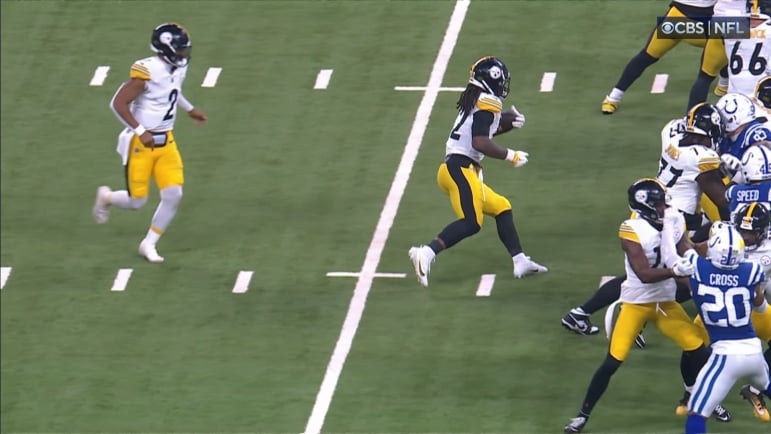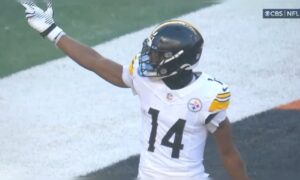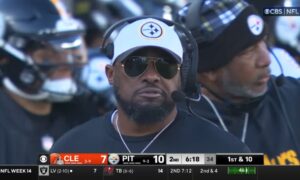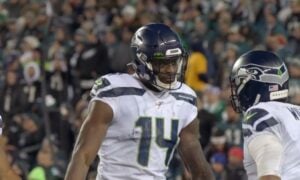After one of the worst statistical rushing performances in recent Pittsburgh Steelers history, the focus this week is on RB Najee Harris and his quiet start to a contract year. Sitting at 3.4 yards per carry without a rushing touchdown and watching Cordarrelle Patterson find daylight last Sunday in the Steelers’ loss to the Indianapolis Colts, some are wondering if Harris’ days as Pittsburgh’s lead back are numbered. Former Steelers NT Chris Hoke weighed in on Harris Thursday.
“Sometimes, I worry about the vision of Najee Harris,” Hoke told 93.7 The Fan’s Joe Starkey. “There was a couple plays in the [Colts] game that were the exact same runs that Cordarrelle Patterson had. Patterson jump cut and accelerated back into the backside A or B gap. And Najee forces it in the frontside B gap.”
Harris ended the Colts game with 13 carries for 19 yards. Of Steelers with at least that many carries, it’s the fewest yards by a back since Willie Parker in 2009. Harris’ longest run of the day only went for 5 yards and in most instances, he was fortunate to find the line of scrimmage. Compare his production to Patterson, who registered over 7 yards per carry on six rushes before exiting with an ankle injury. There was no question with Patterson in the game that Pittsburgh’s run game saw a spark. Hoke chalks it up to different styles.
“He’s just more of a power runner than a jump-cut-accelerate-kind of runner,” Hoke said of Harris.
Which is fair and true. Patterson has quicker feet and shows more burst than Harris. But as our video breakdown outlined this morning, Patterson simply benefitted from better blocking and larger lanes than Harris. You could argue that Patterson’s vision helped create and find lanes, but two of his biggest runs came on gap/man runs with designated holes to hit, runs that were simply blocked up better than what Harris was afforded.
Closing out the Steelers’ Week 3 win over the Los Angeles Chargers, Harris and Patterson ran well on similar concepts that were each well-blocked, and Harris helped barrel his way to create running lanes prior to that. And it’s worth pointing out coming into 2024, analytics said Harris had more success on zone runs than anything else.
Harris has his limitations. He lacks the long speed and acceleration to rip off big runs. That’s never been part of his game, and that won’t change going forward. Patterson is a different runner and, in some respects, a more effective one, able to make quicker cuts behind an o-line struggling to open up lanes. But the tape is the tape. And Pittsburgh’s o-line has to execute, get hats on hats, and generate some movement. Vision doesn’t matter if a lane simply doesn’t exist, and Harris had nowhere to go against the Colts.








